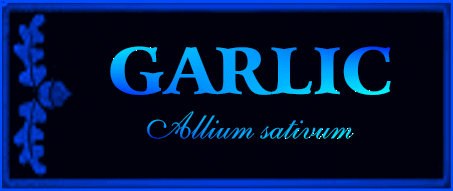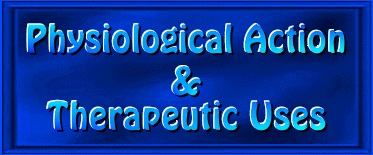

The following is excerpted from The Professional's Herbal Formula Handbook No. 2, comprising 82 pages of traditional information and recent scientific data that describes the medical properties, physiological action and therapeutic uses for each of the 24 ingredients outlined in this formula.




Adaptogenic, alterative, anabolic, antibiotic, anti-cachexic, anti-dyscratic, anti-infective, anti-neoplastic (anti-tumor), antioxidant, antiphlogistic (anti-inflammatory), antipyretic, antiseptic (intestinal and pulmonary), bacteriostatic (anti-bacterial), cytophylactic, cytotoxic, depurative, detoxicant, diuretic, disinfectant, febrifuge, fungistatic (anti-fungal), immuno-potentiating, immuno-stimulant, microbicidal (anti-microbial), restorative, stimulant (circulatory and secretolytic), tonic, vasotonic and viricidal (anti-viral).


Alleviates any general fluids dyscrasia (abnormal or pathological condition) within the blood vessels, tissue-systems and mucous membranes throughout the entire organism during the onset of any immuno-depression or immuno-suppression, and eliminates any form of cachexia (state of malnourishment and general debility) within the blood vessels, tissue-systems or mucous membranes throughout the entire organism in order to provide increased protection against any nutritional deficiencies or insufficiency that leads to various forms of immuno-depression or immuno-suppression; removes various AIDS-related respiratory infections (including chronic bronchitis, respiratory catarrh, recurrent colds and influenza), while soothing the mucous membrane linings in the throat and air passages of the lungs; removes any form of autointoxication, as well as any toxic conditions throughout the entire gastro-intestinal tract; strengthens and tonifies a deficient immune system, and encourages the proper elimination of any toxic waste materials during the treatment of various auto-immune system disorders; exhibits immuno-potentiating and immuno-stimulatory effects in order to enhance greater long-term immune potential and overall non-specific systemic immunity (or immune cell activity) and increased immune response (by activating the body's natural defense mechanisms), particularly in relation to the repair and restoration of any damaged or congested blood vessels, tissue-systems or mucous membranes; displays significant improvement towards AIDS-related conditions, including diarrhea, genital herpes, candidiasis and pansinusitis (accompanied by recurrent fever); exhibits significant antibiotic effects upon the entire gastro-intestinal tract (due to the presence of the volatile sulf-hydryl (sulfur-containing) compound known as allicin), as well as bacteriostatic (anti-bacterial) and stimulatory activity upon the glandular system (due to the presence of the bacteriocide crontonaldehyde); displays cytotoxic and cytophylactic properties in order to provide stronger cellular defense mechanisms against many physical or chemical agents and infectious conditions, including various brain, skin or intestinal infections; demonstrates bacteriostatic, microbicidal and viricidal activity in order to strengthen and increase the resistance of the blood vessels against any invasive or harmful pathogenic bacteria or microbes, as well as to inhibit the further development of any inflammatory or infectious states associated with the onset of various auto-immune disorders; displays broad-spectrum bacteriostatic and anti-microbial effects against many genera of Gram-positive and Gram-negative bacteria, viruses, fungi and parasites during the treatment of a variety of infectious conditions, and demonstrates significant effectiveness towards inhibiting the growth of certain species of harmful pathogenic (disease-bearing) agents that have become strongly resistant to one or more forms of the synthetic antibiotics; exhibits powerful antibiotic activity against various pathogenic species of bacteria, including Staphylococcus aureus, alpha- and beta-hemolytic Streptococcus spp., Bacillus spp., Brucella spp., Vibrio spp., Escherichia coli, Proteus vulgaris, Salmonella enteritidis, Citrobacter spp., Klebsiella pneumoniae, Mycobacterium spp., Aspergillus parasiticus, A. flavus, and A. ochraeus; demonstrates significant fungistatic (anti-fungal) activity against a wide range of fungi, including Candida albicans and those fungi that produce infectious skin diseases (e.g., Microsporum spp., Epidermophyton spp. and Trichophyton spp.); displays significant inhibitory action against Cryptococcus neoformans, due to its powerful immuno-stimulatory effects; displays significant antiphlogistic activity in order to inhibit the formation of certain inflammatory compounds (such as histamine, leukotrienes, prostaglandin, serine proteases and thromboxanes), as well as to reduce any severe inflammatory swelling associated with any blood vessel or tissue inflammation and various other internal inflammatory conditions; demonstrates significant antiseptic effects by destroying the vitality of any organized living ferments in order to prevent the onset of putrefaction or septicemia, and precipitates the proteins in any inflamed tissues in order to provide a mildly aniseptic and protective coating (under which the regeneration of new tissue occurs) for the mucous membranes throughout the entire organism; acts as an effective antiseptic in order to remove any septic conditions associated with tissue degeneration or ulceration, and promotes increased suppuration and a steady toning or restorative impression to the entire glandular system (especially the liver and lymph glands); exhibits antineoplastic (anti-tumor) effects by inhibiting the formation of the carcinogenic (cancer-causing) nitrosamine, as well as significant viricidal activity by enhancing the production of antibodies; promotes normal natural killer (NK) cell activity, while significantly improving the helper/suppressor ratio; exhibits anabolic activity in order to accelerate the production of DNA and RNA (which enhances the production of proteins in the form of antibodies), while increasing protein and lipid synthesis in the bone marrow and DNA/RNA content in the adrenals and lymph nodes (along with increased body weight and enhanced re-synthesis of glycogen and high-energy phosphate compounds); demonstrates powerful adaptogenic (balancing and strengthening) activity in order to increase the overall resistance of an organism towards any adverse influences or stressful conditions (whether they be physical, chemical or biological in nature), especially upon the immune system and both the central (cerebro-spinal centers) and peripheral nervous systems; acts as a secretolytic stimulant in order to promote increased gastric, pancreatic or intestinal secretory and motor activity, and enhances greater peripheral circulation (due to its antioxidant activity); exhibits significant antioxidant effects in order to provide greater oxygen-transport capabilities throughout the bloodstream, as well as enhance the transport of additional oxygen directly into the cells and tissue-systems throughout the entire organism; acts as a circulatory stimulant by increasing the blood flows through the arteries and blood vessels in order to enhance greater nutrient transport, absorption and utilization, thereby accelerating the healing processes associated with the repair of any damaged blood vessels, tissue-systems or mucous membranes; displays alterative activity in order to correct any disordered bodily function, thereby activating increased alterations in both metabolic and tissue functions as a defensive measure against the onset of acute or chronic disease; exhibits restorative effects in order to regain increased vigor or vitality and greater strength, while enhancing normal tissue and metabolic functional capabilities; demonstrates alterative and restorative properties in order to re-establish healthy systemic functional capabilities, as well as to establish greater vascular tone throughout the entire organism (due to its ability to stimulate increased secretory flows); exhibits alterative effects in order to stimulate the anabolic growth processes, thereby enhancing the repair of any degenerated, deteriorated or debilitated cells or tissues (while promoting the elimination of any catabolic waste materials); displays tonifying effects in order to permanently enhance the overall energy-levels throughout the entire organism, without adversely affecting the functional capabilities of any particular organ or system.
![]()
None.
![]()